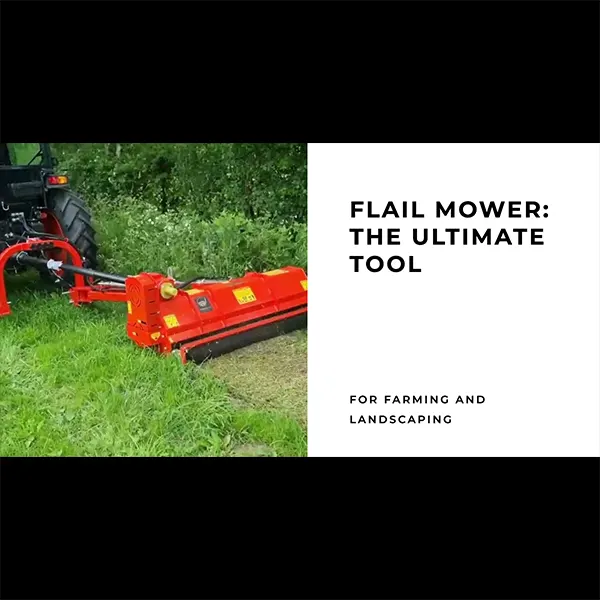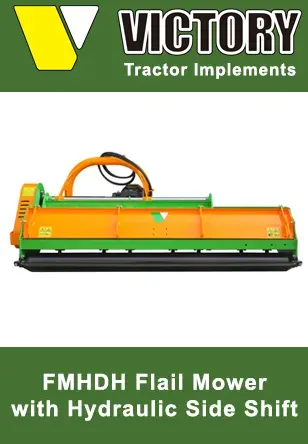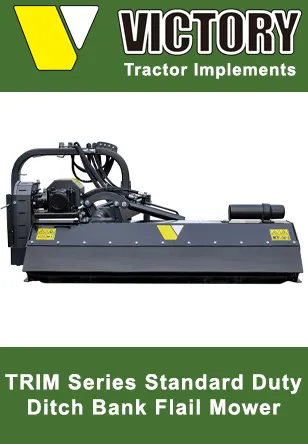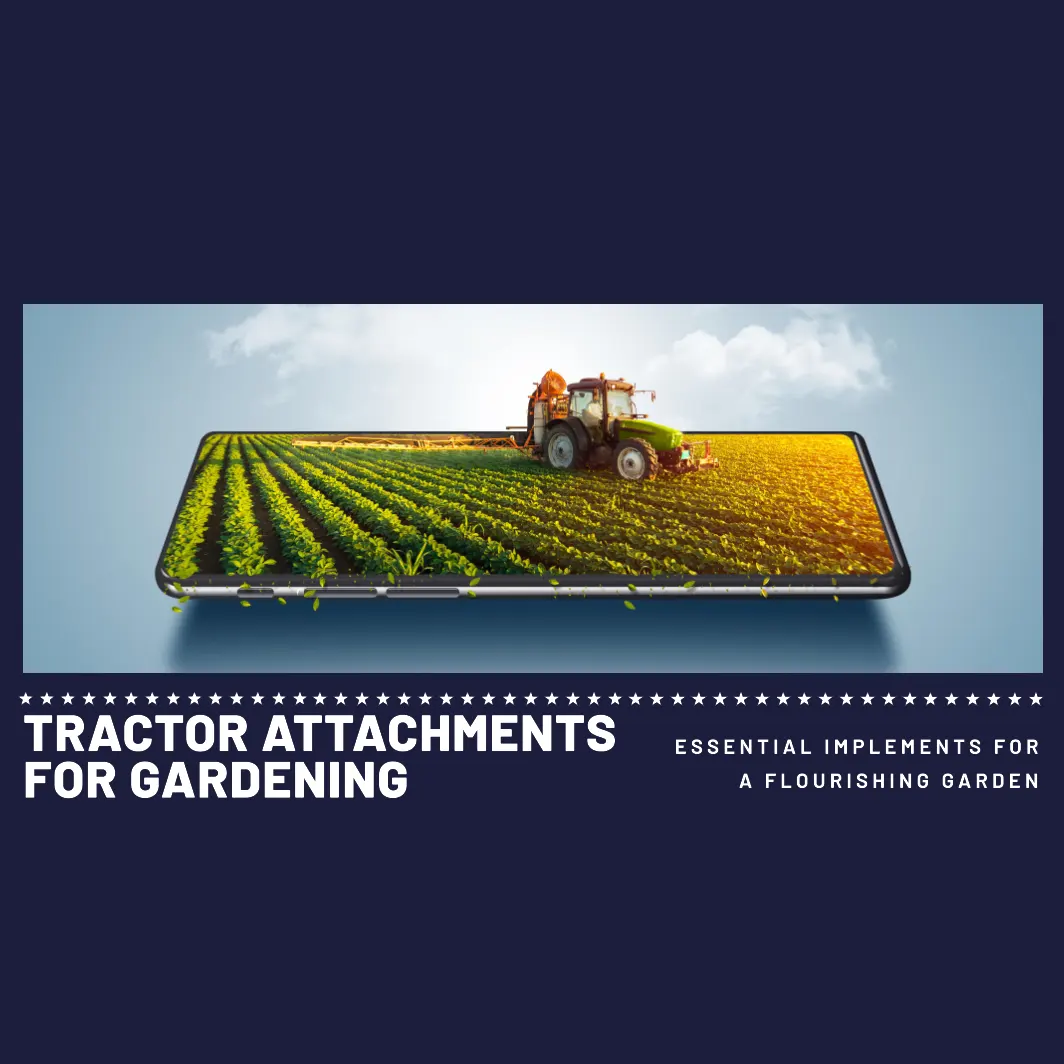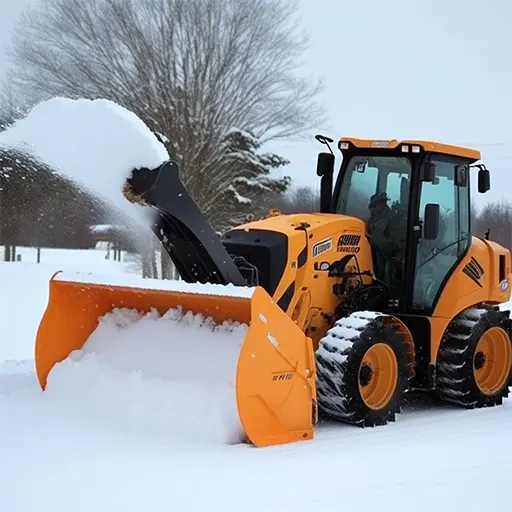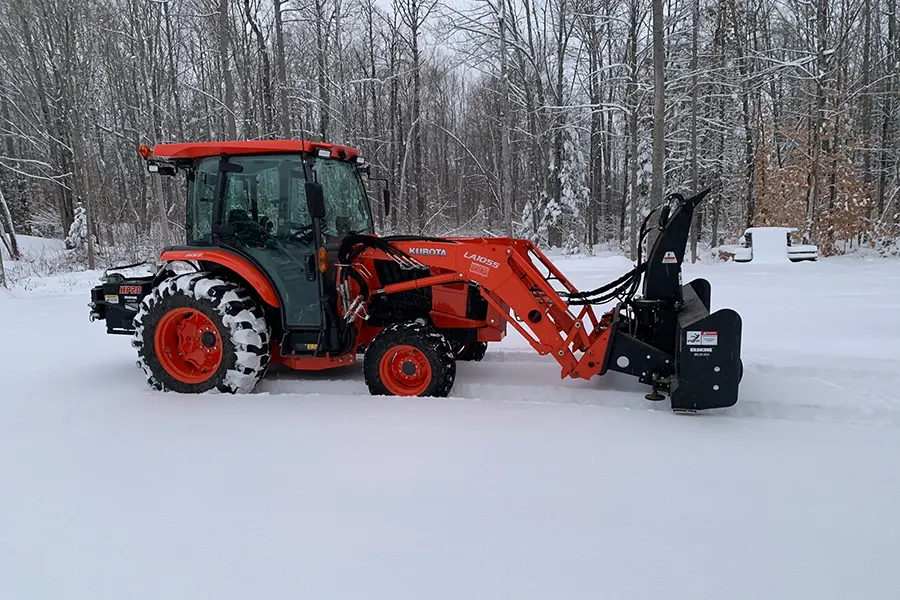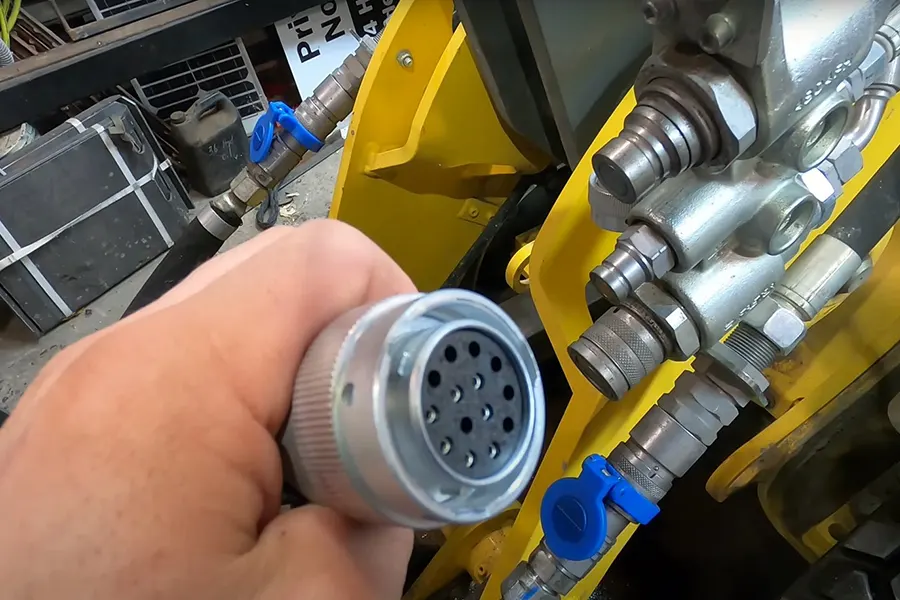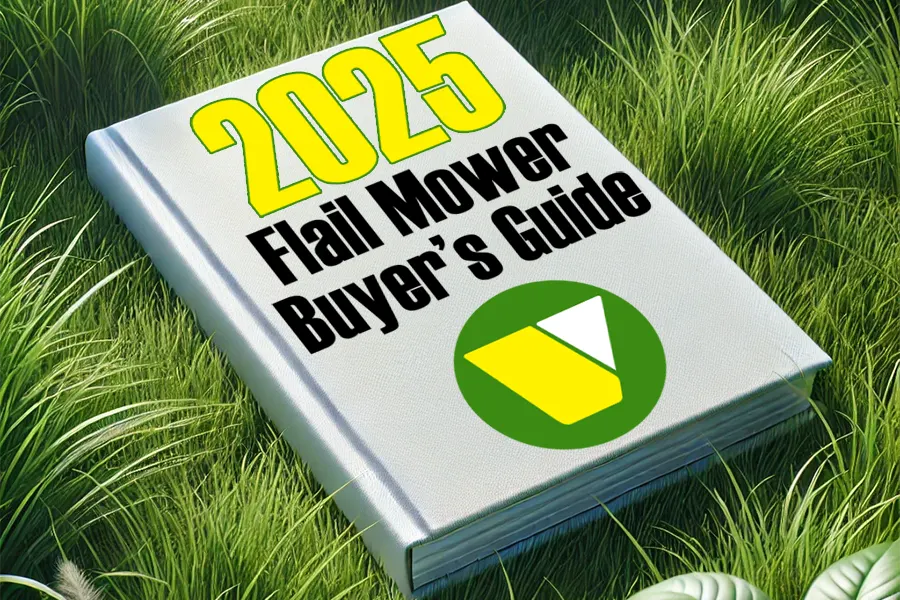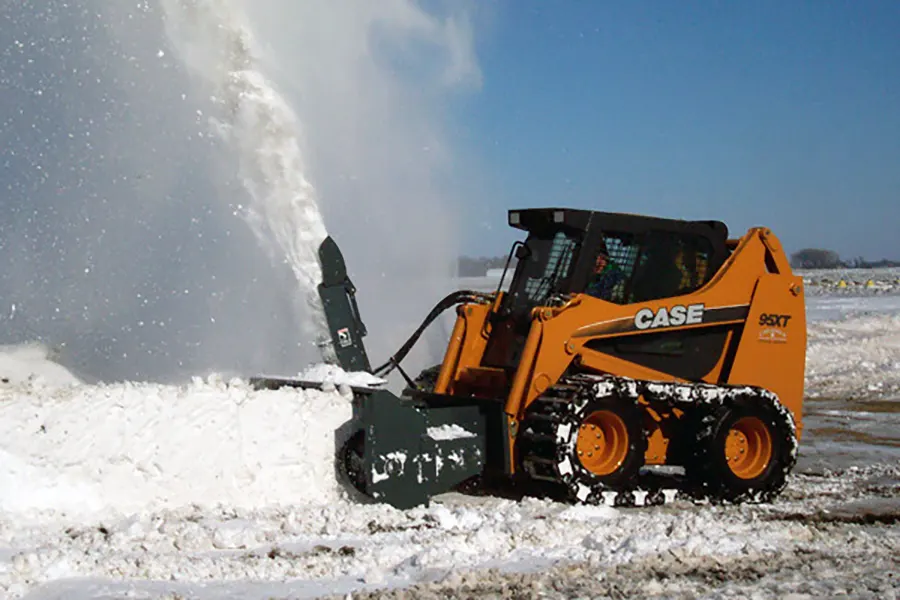If you’re a farmer, landscaper, or a homeowner with a large lawn, you’ve probably heard of a flail mower. But what exactly is a flail mower, and why should you consider adding one to your collection of tractor Implements? Let’s dive into the world of flail mowers and discover why they might be the perfect tool for your needs.
| Key Points | Description |
|---|---|
| What is a Flail Mower? | A versatile and powerful tool used to handle heavier grass or scrub that a standard lawn mower can’t cope with. |
| Flail Mower vs. Brush Hog | Flail mowers are preferred for their versatility and efficiency, able to handle a wider range of vegetation and providing a cleaner, more even cut. |
| Flail Mower Capabilities | Can cut small trees and saplings, handle rocks, and mow in both directions. Some models can even handle grass and vegetation up to 30 inches tall. |
| Horsepower Requirements | Depends on the size and model of the mower, ranging from 15 horsepower for smaller models to 40 horsepower or more for larger, PTO-driven models. |
| Safety of Flail Mowers | Safe to use when operated correctly and with regular maintenance. The unique design of the flail blades reduces the risk of debris being thrown. |
| Types of Flail Mowers | Includes verge flail mowers, designed to cut grass and vegetation on road verges and ditches, and boom flail mowers, used for maintaining larger areas like parks and golf courses. |
What is a Flail Mower?
A flail mower is a type of powered garden or agricultural equipment, which is used to deal with heavier grass or scrub which a standard lawn mower could not cope with. Some smaller models are self-powered, but many are PTO driven implements, which can be attached to the three-point hitches found on the rear of most tractors. This type of mower is best used to provide a rough cut to taller grass where contact with the ground is not desired, as around tree trunks or borders.
Flail Mower Compatibility Tool
What are Flail Mowers Good For?
Flail mowers are versatile tools that can handle a variety of tasks. They are particularly good for cutting through thick grass and vegetation, including heavy weeds and small trees. This makes them ideal for maintaining pastures, orchards, and wooded areas.
Furthermore, flail mowers are known for their ability to handle rocks and other obstacles without damaging the blades. This is due to the unique design of the flail blades, which are attached to the mower using hinges. This allows the blades to ‘flail’ out of the way if they hit a hard object, hence the name ‘flail mower’.
Flail Mower vs. Brush Hog: Which is Better?
The debate between flail mowers and brush hogs is a common one in the farming and landscaping community. While both have their advantages, many professionals prefer flail mowers for their versatility and efficiency.
Unlike brush hogs, flail mowers can handle a wider range of vegetation, from light grass to heavy brush. They also leave a cleaner, more even cut, which is particularly important for maintaining pastures or lawns. Furthermore, flail mowers are safer to use around rocks and other obstacles, as the flail blades are less likely to throw debris.
Are Flail Mowers Good for Grass?
Yes, flail mowers are excellent for grass, especially when dealing with taller or thicker varieties. They can cut grass to a variety of heights, from a close cut for lawns to a taller cut for pastures. This makes them a versatile tool for any grass maintenance needs.
How Tall of Grass Can a Flail Mower Cut?
The cutting height of a flail mower depends on the model and the type of blades used. However, most flail mowers can handle grass up to 20 inches tall. Some heavy-duty models, like the EMHD heavy-duty flail mower, can even handle grass and vegetation up to 30 inches tall.
How Many Horsepower Does it Take to Run a Flail Mower?
The horsepower required to run a flail mower depends on the size and model of the mower. Smaller subcompact tractor models may require as little as 15 horsepower, while medium and large tractor models may require 40 horsepower or more. It’s important to check the specifications of the flail mower and ensure your tractor has the necessary power to operate it.
Can You Cut Hay with a Flail Mower?
Yes, you can cut hay with a flail mower. In fact, flail mowers are often used for this purpose due to their ability to handle tall grass and their clean, even cut. However, if you’re planning to bale the hay, you might want to consider a mower-conditioner, which cuts and conditions the hay in a single pass.
Can a Flail Mower Cut Trees?
Flail mowers are not designed to cut down large trees, but they can handle small trees and saplings with ease. The FMHD heavy-duty flail mower, for instance, can handle saplings up to 2 inches in diameter. This makes them ideal for maintaining orchards or wooded areas.
Can You Cut Alfalfa with a Flail Mower?
Yes, flail mowers can be used to cut alfalfa. However, it’s important to note that flail mowers will chop the alfalfa into smaller pieces, which can lead to faster drying times. This can be beneficial if you’re in a hurry, but it can also lead to loss of nutritional value if the alfalfa dries out too quickly.
Is a Flail Mower Better Than Rotary?
Both flail mowers and rotary mowers have their advantages, but many professionals prefer flail mowers due to their versatility and efficiency. Unlike rotary mowers, flail mowers can handle a wider range of vegetation and leave a cleaner, more even cut. They are also safer to use around rocks and other obstacles, as the flail blades are less likely to throw debris.
Can Flail Mowers Handle Rocks?
Yes, flail mowers are designed to handle rocks and other obstacles. The unique design of the flail blades, which are attached to the mower using hinges, allows the blades to ‘flail’ out of the way if they hit a hard object. This not only protects the blades from damage but also reduces the risk of debris being thrown.
What Blades are Best with a Flail Mower?
The best blades for a flail mower depend on the type of vegetation you’re dealing with. For light grass Y-blades are usually the best choice whereas hammer blades are better suited for heavy brush, small saplings, thick vegetation, and tall grass. Check out our guide to tractor flail mowers for more information on choosing the right blades.
What is the Best Lawn Mower for Heavy Weeds?
For heavy weeds, a flail mower is often the best choice. Thanks to their robust design and powerful cutting action, flail mowers can easily handle thick, heavy weeds that would choke a regular lawn mower. The FMM mower mulcher is a particularly good choice for this task.
What Lawn Mower Do Professionals Use?
Professionals use a variety of lawn mowers, depending on the task at hand. However, for heavy-duty tasks like cutting through thick vegetation or maintaining large areas, many professionals prefer flail mowers. Check out our top 10 flail mower brands to see some of the models preferred by professionals.
What is the Tip Speed of a Flail Mower?
The tip speed of a flail mower refers to the speed at which the flail blades move. This can vary depending on the size and model of the mower, but typically, the tip speed of a flail mower ranges from 10,000 to 18,000 feet per minute. This high speed, combined with the unique design of the flail blades, allows the mower to cut through thick vegetation with ease.
Will a Flail Mower Mulch Leaves?
Yes, a flail mower can effectively mulch leaves. As the mower cuts, it chops the leaves into small pieces, which are then distributed evenly across the lawn. This not only helps to keep your lawn looking neat and tidy, but it also returns valuable nutrients to the soil, promoting healthier growth.
How High Should I Mow My Pasture?
The ideal mowing height for your pasture depends on the type of grass and the intended use of the pasture. However, as a general rule, most pastures should be mowed to a height of 3 to 4 inches. This allows the grass to recover quickly after mowing and helps to prevent weed growth.
What are Other Names for Flail Mower?
Flail mowers are also commonly referred to as brush mowers, bush hogs, or mulching mowers. Despite the different names, these all refer to the same type of mower, characterized by its flail blades and ability to handle heavy vegetation.
What is the Most Efficient Riding Mower Pattern?
The most efficient riding mower pattern can depend on the shape and size of the area you’re mowing. However, many professionals recommend the “double spiral” pattern. This involves starting in the middle of the area and mowing in a spiral pattern, working your way outwards. Once you reach the edge, you then mow in a spiral pattern in the opposite direction. This pattern ensures that you cover the entire area without missing any spots.
What is the Difference Between a Flail Mower and a Brush Cutter?
While both flail mowers and brush cutters are designed to handle heavy vegetation, there are some key differences between the two. Brush cutters are typically used for cutting through dense brush and undergrowth, while flail mowers are more versatile and can handle a wider range of vegetation, from light grass to heavy brush. Furthermore, flail mowers leave a cleaner, more even cut and are safer to use around rocks and other obstacles.
What is a Verge Flail Mower?
A verge flail mower is a type of flail mower that is designed to cut grass and vegetation on road verges, ditches, and other hard-to-reach areas. These mowers are typically mounted on the back of a tractor and have a hydraulic arm that can be adjusted to reach the desired area.
What is a Boom Flail Mower?
A boom flail mower is similar to a verge flail mower, but it has a longer reach and is often used for maintaining larger areas, such as parks, golf courses, or highway verges. The boom arm allows the mower to reach areas that would be difficult or impossible to reach with a standard flail mower.
Are Flail Mowers Safe?
Yes, flail mowers are safe to use as long as they are operated correctly and regular maintenance is performed. The unique design of the flail blades reduces the risk of debris being thrown, and many models have safety features such as protective guards and emergency stop buttons. However, as with any power equipment, it’s important to read and understand the operator’s manual before using a flail mower.
Wrapping Up
Flail mowers are a versatile and powerful tool in the world of farming and landscaping. With their ability to handle a wide range of vegetation, from light grass to heavy brush, they are an invaluable asset for professionals and homeowners alike. Whether you’re maintaining a pasture, cutting through heavy weeds, or simply mowing your lawn, a flail mower from Victory Tractor Implements can get the job done quickly and effectively.
Remember, the key to getting the most out of your flail mower is understanding how it works and using it correctly. Always check the specifications of the flail mower and ensure your tractor has the necessary power to operate it. Regular maintenance is also crucial to ensure the longevity and safety of your equipment.
We hope this article has answered all your questions about flail mowers. If you’re interested in adding a flail mower to your collection of tractor implements, be sure to check out our wide range of flail mowers and find the one that’s perfect for your needs. Happy mowing!
Frequently Asked Questions about Flail Mowers
1. What is a Flail Mower?
A flail mower is a type of powered garden or agricultural equipment, designed to deal with heavier grass or scrub that a standard lawn mower can’t handle. They are particularly good for cutting through thick grass and vegetation, including heavy weeds and small trees.
2. Is a Flail Mower Better Than a Brush Hog?
While both have their advantages, many professionals prefer flail mowers for their versatility and efficiency. Unlike brush hogs, flail mowers can handle a wider range of vegetation, from light grass to heavy brush. They also leave a cleaner, more even cut, which is particularly important for maintaining pastures or lawns.
3. Can a Flail Mower Cut Trees?
Flail mowers are not designed to cut down large trees, but they can handle small trees and saplings with ease. Some heavy-duty models can even handle saplings up to 2 inches in diameter.
4. How Many Horsepower Does it Take to Run a Flail Mower?
The horsepower required to run a flail mower depends on the size and model of the mower. Smaller subcompact tractor models may require as little as 15 horsepower, while medium and large tractor models may require 40 horsepower or more.
5. What is the Difference Between a Flail Mower and a Brush Cutter?
Brush cutters are typically used for cutting through dense brush and undergrowth, while flail mowers are more versatile and can handle a wider range of vegetation, from light grass to heavy brush. Furthermore, flail mowers leave a cleaner, more even cut and are safer to use around rocks and other obstacles.
6. What is a Verge Flail Mower?
A verge flail mower is a type of flail mower that is designed to cut grass and vegetation on road verges, ditches, and other hard-to-reach areas. These mowers are typically mounted on the back of a tractor and have a hydraulic arm that can be adjusted to reach the desired area.
7. Are Flail Mowers Safe?
Yes, flail mowers are safe to use as long as they are operated correctly and regular maintenance is performed. The unique design of the flail blades reduces the risk of debris being thrown, and many models have safety features such as protective guards and emergency stop buttons.
For more information about flail mowers, check out our 2023 Flail Mower Buyer’s Guide.

Victory Tractor Implements is proud to offer a wide range of products including flail mowers, wood chippers, rotary tillers, and backhoes, all designed to be connected directly to your tractor’s PTO for maximum efficiency and performance. In addition, we also offer winter equipment such as snow plows and snow blowers, designed for use with skid steers.
We source all of our equipment directly from the manufacturer and pass the savings on to our customers. As always, the team is standing by to answer any questions to assist with your decision. Victory support can be reached directly at (562) 534-8182 or sales@etractorimplements.com
Proud supporters of the FFA

